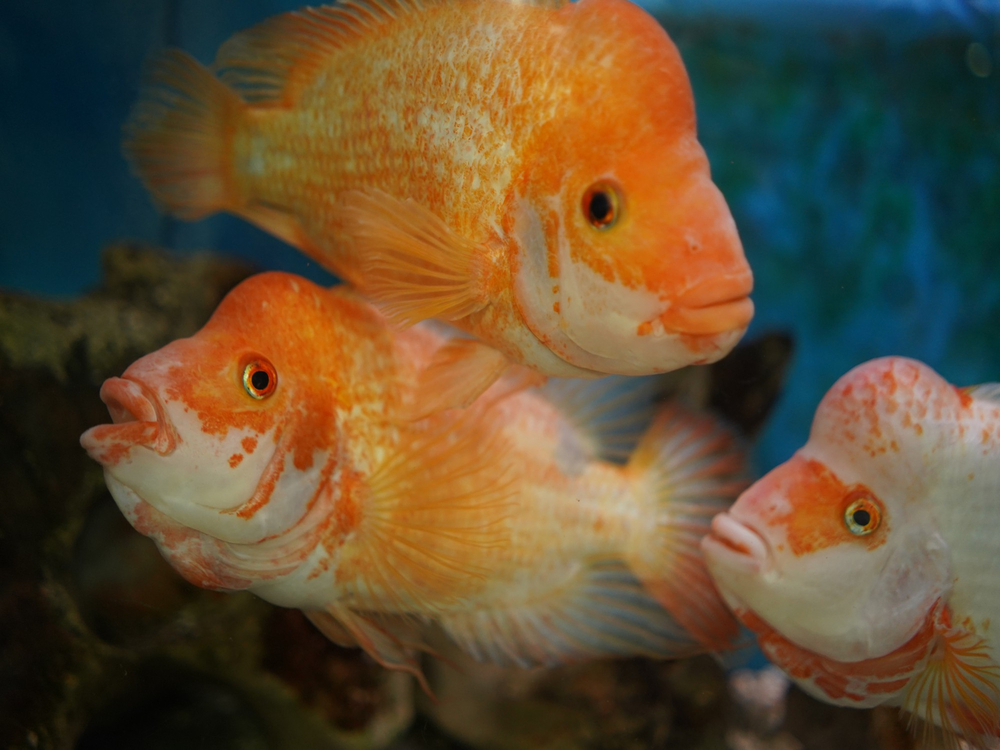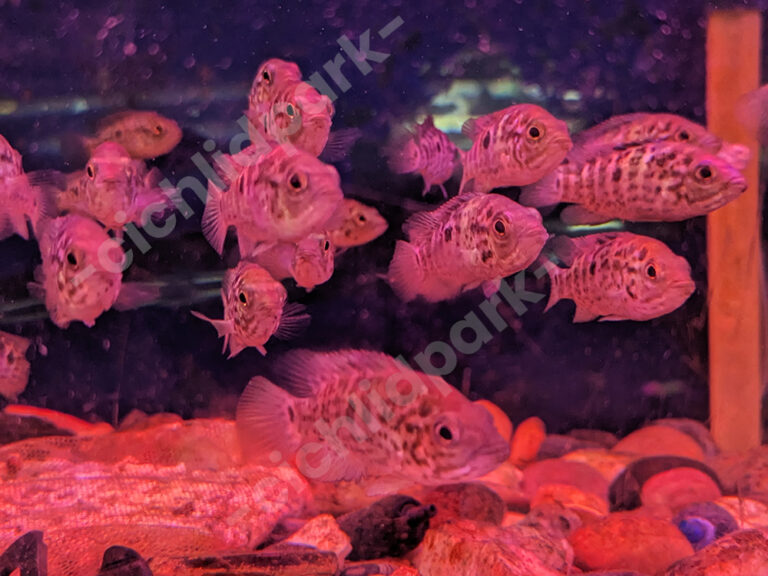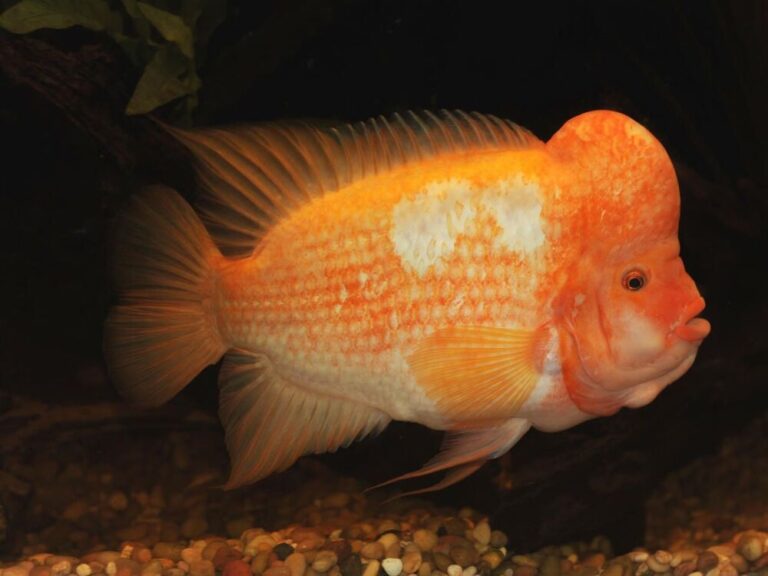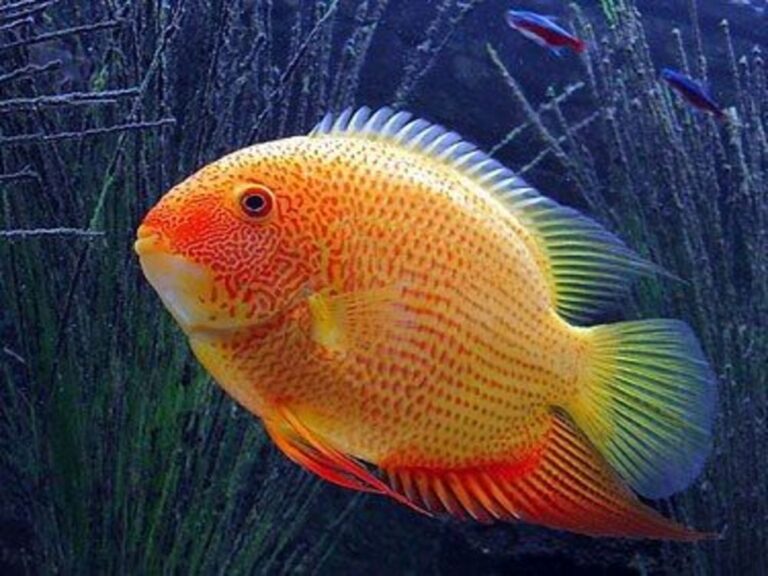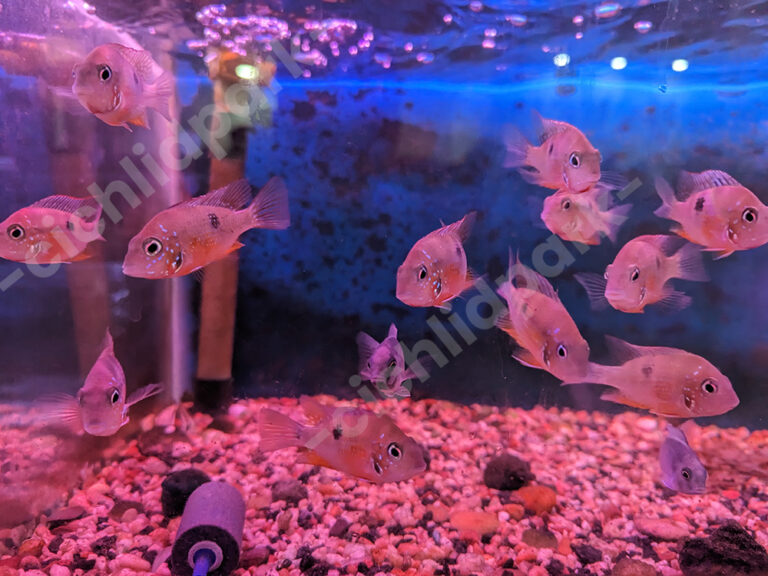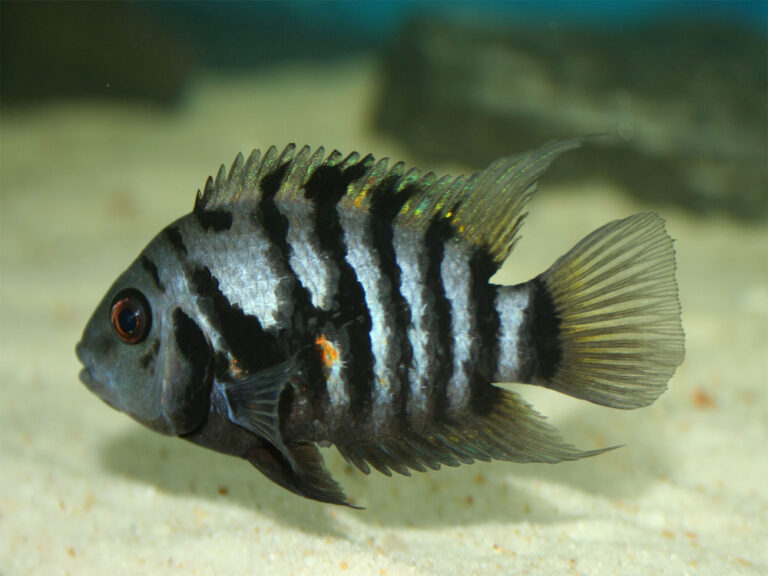The Midas Cichlid (Amphilophus citrinellus), also known as the Red Devil Cichlid, is a captivating and vibrant freshwater fish native to Central America. Named after the mythical King Midas, these cichlids are renowned for their stunning colors and robust personalities. In this comprehensive guide, we will delve into the fascinating world of Midas Cichlid breeding, explore their dietary preferences, and offer essential tips for creating a suitable tank setup to ensure their well-being in your aquarium.
Midas Cichlid Tank Setup
Creating an ideal tank setup is essential for the well-being of Midas Cichlids. A spacious aquarium of at least 75 gallons is recommended to accommodate their growth and active behavior. Provide ample hiding spots with rocks, caves, and driftwood to replicate their natural habitat and reduce territorial aggression. Dense vegetation, such as floating plants or broad-leafed species, will create shaded areas and offer additional shelter. Efficient filtration and regular water changes are necessary to maintain water quality.
Midas Cichlid Feeding
Midas Cichlids are omnivores with hearty appetites. In the wild, they feed on small fish, insects, crustaceans, and plant matter. In captivity, provide a well-balanced diet with high-quality cichlid pellets or flakes as the staple food. Supplement their diet with protein-rich treats like brine shrimp, bloodworms, and daphnia, and occasionally offer vegetables like blanched spinach or peas. Feeding multiple small meals throughout the day is recommended to mimic their natural feeding behavior.
Midas Cichlid Breeding
Breeding Midas Cichlids can be an exciting and rewarding experience. To encourage successful breeding, provide a spacious aquarium with plenty of hiding spots and dense vegetation, as these cichlids appreciate a secure environment for courtship and spawning. Maintaining stable water conditions with a temperature between 75°F to 82°F (24°C to 28°C) and a pH level ranging from 6.5 to 8.0 is crucial for their breeding success.
During courtship, the male will display vibrant colors and engage in elaborate dances to attract the female. Once a pair has bonded, the female will lay her eggs on a flat surface, while the male promptly fertilizes them. Both parents will actively protect the eggs and fry. It is recommended to separate the breeding pair and their offspring from other tankmates to ensure the safety of the fry.
Conclusion
Midas Cichlids are striking and intelligent fish that can bring a dynamic and lively presence to your aquarium. By understanding their breeding habits, dietary preferences, and tank setup requirements, aquarists can provide a thriving environment for these captivating fish. With proper attention and dedication, Midas Cichlids will reward you with their vibrant colors and engaging behaviors, creating a stunning and captivating centerpiece in your aquatic world.

